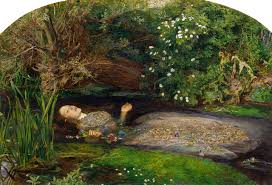The Allure of the Ophelia Painting: Exploring Its Legacy

Introduction
The painting ‘Ophelia’, created by the renowned Pre-Raphaelite artist John Everett Millais in 1851-1852, holds a significant place in the history of art. Capturing the tragic moment from Shakespeare’s ‘Hamlet’, the portrayal of the character Ophelia is not just a testament to Millais’s artistic mastery but also a reflection of the themes of beauty and mortality. This artwork remains relevant today as it continues to inspire discussions on mental health, female representation, and the intersection of nature and art.
The Painting’s Background
‘Ophelia’ depicts the drowning of the character Ophelia, who, in her madness, has succumbed to a watery grave. Millais meticulously painted this scene after studying real-life flora and conducting extensive research in the English countryside. The lush, vivid detail of the natural elements surrounding Ophelia adds a striking contrast to her lifeless form, suggesting both the beauty and tragedy of her demise. The model for Ophelia, Elizabeth Siddal, posed in a bathtub full of water for Millais, emphasizing the lengths to which artists would go to achieve authenticity in their works.
Importance in Art History
The painting is a seminal example of the Pre-Raphaelite Brotherhood’s ideals, which sought to return to intricate detail and vibrant naturalism, in stark contrast to the then-dominant Victorian ideals. At the time of its unveiling, ‘Ophelia’ was both celebrated and critiqued; however, it was pivotal in establishing Millais as one of the leading artists of his time. Today, ‘Ophelia’ is housed in the Tate Britain gallery, where it continues to draw admirers, reflecting the enduring power of art to evoke emotion.
Contemporary Relevance
In recent years, the themes explored in Millais’s ‘Ophelia’ have regained prominence, particularly in discussions regarding mental health and the representation of women in art. The combination of beauty and tragedy resonates in modern societal conversations, making the painting relevant to shifts in cultural and feminist ideologies. Additionally, various contemporary artists have drawn inspiration from Millais, creating new interpretations that challenge traditional narratives.
Conclusion
The legacy of Millais’s ‘Ophelia’ transcends time and continues to captivate audiences with its visual splendour and emotional depth. As contemporary art evolves, the timeless themes embedded within this masterpiece invite ongoing reflection on beauty, sorrow, and the human condition. For art enthusiasts and casual admirers alike, ‘Ophelia’ remains a source of inspiration and a poignant reminder of the intricate relationship between art and life.









